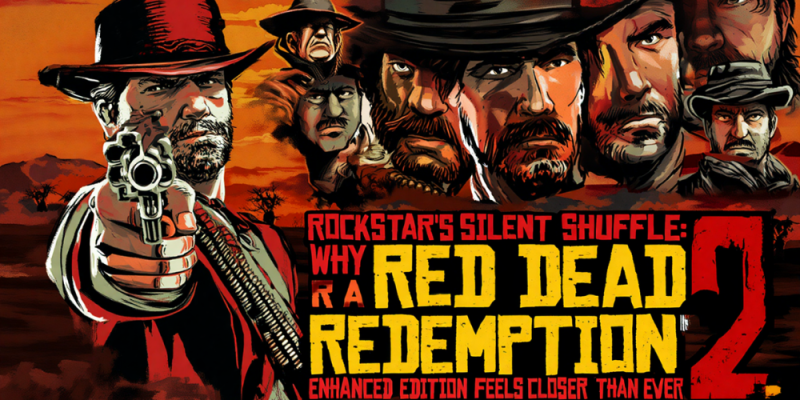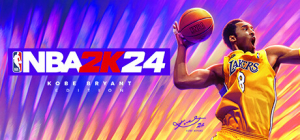Rockstar’s Silent Shuffle: Why a Red Dead Redemption 2 Enhanced Edition Feels Closer Than Ever
- Landon White
- October 06, 2025

Red Dead Redemption 2 has sat on a pedestal for years, the kind of open‑world epic people hold up when they talk about immersion, simulation, and sheer narrative weight. That’s why a quiet nudge on its Steam backend was enough to send the community spiraling into detective mode, dissecting depots, manifests, and branch flags like a forensic lab. The phrase Enhanced Edition has rocketed around social feeds because it fits a dream many of us share: the definitive version of a landmark game that fully embraces modern hardware. You and I both know how this usually goes—tiny changes in a database lead to outsize expectations—but it’s hard to ignore the pattern. Rockstar often moves in silence before a reveal, and RDR2’s audience is not just big, it’s voracious. PC players want visual upgrades and better frametime stability. PS5 and Xbox Series X|S owners crave official 60 fps support and shorter loading. And everyone wants clarity on what the future looks like for the single‑player campaign and the embers of Red Dead Online. The question isn’t whether an update would make sense; it’s how far Rockstar is willing to go and what the studio considers the new gold standard for a game that already feels mythic.
Main Part
If an Enhanced Edition is on the table, the wishlist practically writes itself. On console, two or three display modes seem realistic: a native 4K target with a 30 fps cap for those who value image purity, a 60 fps performance mode at dynamic resolution, and—if Rockstar follows recent trends—a performance RT option that blends ray‑traced ambient occlusion or shadows with aggressive reconstruction. Variable Refresh Rate, HDR calibration refinements, and improved temporal anti‑aliasing would quickly modernize the presentation. On PS5, DualSense haptic nuance, adaptive trigger feedback for different firearm types, and 3D audio profiles that give weather, wildlife, and crowd beds richer presence would be transformational. On PC, support for DLSS 3 Frame Generation with Reflex, FSR 3 frame generation, and XeSS would scale performance across a wide stack, while updated shader compilation behavior and more granular texture streaming settings could tame stutter. Throw in higher‑resolution vegetation, denser volumetrics, improved SSR, better water caustics, and an optional RT AO pass, and the frontier suddenly feels newly lit. None of this requires science fiction, just a thoughtful pass on rendering, IO, and data layout that matches today’s expectations.
So what’s actually fueling the speculation? Steam backend watchers noticed fresh movement on the app’s depots—those are the content packages that define what the client downloads—and that’s the kind of breadcrumb that has preceded updates for other big releases. A modified manifest and traffic on previously quiet branches can mean anything from QA builds being staged to a proper content fork for new SKUs. It’s not proof of a re‑release, but it fits a pattern Rockstar has used before: push silent updates, iterate internally, and only then illuminate the path with a Newswire post. Fans also keep an eye on regional ratings boards because new submissions sometimes leak platform shifts or content changes weeks ahead of marketing. Another tell could be platform storefront metadata: appearance of distinct PS5 or Series X|S product pages, new cover art, or controller feature tags. If you remember how Grand Theft Auto V’s current‑gen upgrade rolled out—with separate fidelity and performance modes, RT shadows on select platforms, and faster asset streaming—the blueprint for a modernized RDR2 doesn’t feel far‑fetched. The trick is reading the tea leaves without assuming they spell a release date.
There’s a practical business case for this timing too. With Grand Theft Auto VI dominating headlines and a 2025 window pulling focus, Rockstar has an incentive to shore up its back catalog, unify tech across platforms, and reintroduce a prestige title to a new console generation that has matured. A refreshed RDR2 would boost the brand’s momentum, align support pipelines, and potentially re‑monetize an audience that’s happy to double‑dip for a meaningful upgrade. The open question is pricing and path: a free next‑gen patch would unleash goodwill at scale, while a paid Enhanced Edition could include deeper rendering changes, accessibility upgrades, and curation across the epilogue and side activities to justify the fee. Expect discourse around save migration, trophy/achievement stacks, and whether Red Dead Online gets stability improvements, anti‑cheat hardening on PC, or quality‑of‑life revisions like clearer role progression and better onboarding. Even small additions—expanded Photo Mode tools, richer color grading presets, and camera path exports for creators—would ripple through the community. Delivering a clean technical pass plus the right creature comforts could turn a simple refresh into a cultural encore.
Conclusion
Here’s where we land: the Steam hints are a spark, not a verdict, but the stars are aligned for an official upgrade that respects both the art and the audience. If you’re on PC, it’s worth backing up saves, verifying your Rockstar Launcher setup, and keeping an eye on driver notes from NVIDIA, AMD, and Intel—those sometimes telegraph support for new binaries before an announcement. Console players should watch platform news feeds, wish‑list the current SKU to capture any upgrade notices, and look for store metadata changes that tend to surface just ahead of preorders. Everyone should keep a tab on SteamDB trackers, Rockstar Support pages, and ratings boards; those are the reliable early indicators. In the meantime, if the itch to return is too strong, a curated mod setup on PC with a stable reshade, refined LOD configs, and careful use of upscalers can deliver a tasteful uplift without hurting performance. Whether Rockstar ships a modest patch or a fully fledged Enhanced Edition, the frontier is poised to feel fresh again. And when a studio with Rockstar’s craft decides to revisit a classic, the smart move is to expect measured improvements, hope for a few audacious surprises, and enjoy the ride either way.















